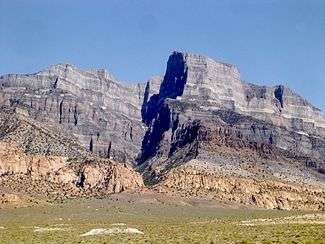Pluton
- Plutonic redirects here. For the Australian gold mine see Plutonic Gold Mine

In geology, a pluton is a body of intrusive igneous rock (called a plutonic rock) that is crystallized from magma slowly cooling below the surface of the Earth. Plutons include batholiths, stocks, dikes, sills, laccoliths, lopoliths, and other igneous bodies. In practice, "pluton" usually refers to a distinctive mass of igneous rock, typically several kilometers in dimension, without a tabular shape like those of dikes and sills. Batholiths commonly are aggregations of plutons. Examples of plutons include Denali, Cuillin, Cardinal Peak, Mount Kinabalu and Stone Mountain.
The most common rock types in plutons are granite, granodiorite, tonalite, monzonite, and quartz diorite. Generally light colored, coarse-grained plutons of these compositions are referred to as granitoids.
Etymology
The term originated from Pluto, the classical god of the underworld. The use of the name and concept goes back to the beginnings of the science of geology in the late 18th century and the then hotly debated theories of plutonism (or vulcanism), and neptunism regarding the origin of basalt.
See also
References
- Glazner, A.F., Bartley, J.M., Coleman, D.S., Gray, W. and Taylor, R.Z. (2004). "Are plutons assembled over millions of years by amalgamation from small magma chambers?" GSA Today, 14 (4:April), pp. 4–11.
- Young, Davis A. (2003). Mind Over Magma: the Story of Igneous Petrology. Princeton University Press. ISBN 0-691-10279-1.
Further reading
- Best, Myron G. (1982). Igneous and Metamorphic Petrology. San Francisco: W. H. Freeman & Company. pp. 119 ff. ISBN 0-7167-1335-7.
External links
| Look up pluton in Wiktionary, the free dictionary. |